Each heating system contains small particles that constantly circulate along with the liquid through the pipes. Most often, such substances are rust, scale or similar elements. When a lot of these components accumulate, then problems begin with heating. Debris gets stuck in one place and begins to form deposits that impede the normal circulation of water, and, therefore, heat transfer becomes worse. Of course, there is a solution to this problem - flushing the heating system.
The editors of the site "bestx.htgetrid.com/en/" have prepared for you a rating of the best cleaning agents for the heating system for 2020.
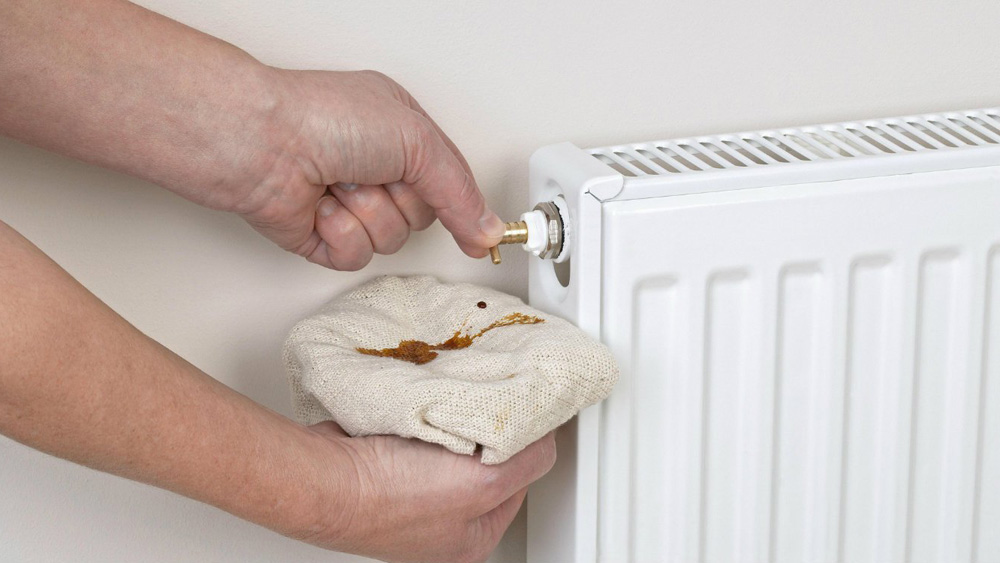
Content
Is it really necessary to flush the system?
It is important to understand that not all apartments and private houses need flushing. Since modern manufacturers create more innovative devices that do not accumulate sediment. And when heat transfer deteriorates, this does not always indicate pollution. Airing is common and occurs after the system is filled with new fluid. To eliminate this, first all the air is expelled, then antifreeze or water is added. At first (about 2-3 weeks), the coolant will precipitate - this is a normal process, the main thing is to constantly clean the filters where it will fall out. After a while, when the impurities are exhausted, the particles will stop falling out.
When a person uses a similar system (closed type), then it will work for many years without any cleaning. The opposite situation, when the heating needs constant recharge from the outside. Then a person cannot avoid the formation of sediment. After 3-4 years, a large amount of debris will accumulate in the pipes, and sludge will form in the batteries. In this case, flushing is required.
A similar effect can occur due to the penetration of air into a closed system. The bubbles will begin to corrode the metal elements, which will cause the formation of iron oxide, which will accumulate in the filter all the time. The problem here won't be bad water, but plastic pipes, which were produced without a protective oxygen barrier.
In order for the pipes to start heating again and not leave the owner in the cold, the system should be flushed. But besides this, the cleaning process must be carried out:
- When the heating devices stopped giving off heat. This can happen with one element or with several. The first sign is uneven heating of the sections when the bottom is completely cold. It should be understood that standard situations were considered and eliminated, but this did not affect heat transfer.
- When the heating system is constantly filled with fresh water or some other substance. This often happens when a person uses an electrode boiler, since in order for it to function normally, it is necessary to add water with a specific salt value. So the owner constantly monitors the chemical reaction and monitors the salt level or adds a new coolant to automate the process.
- When a large amount of oxygen enters the water. Signs of this problem are daily clogging of the sump and poor heat transfer, while the boiler is operating at its maximum capacity.
If such problems occur, then the only solution is to flush the heating system. In this case, you can forget about the frequency, since everything must be cleaned so that the situation does not get worse. When the user is connected to central heating, everything is much easier, since the radiator network is flushed annually, after this stage, pressure testing is carried out. It is carried out according to special rules.
3 ways to flush the system
Often there are options where special equipment is used for cleaning, but not all users can hire such a service, and even fewer will buy specialized devices. Therefore, there are three easy ways to carry out cleaning at home:
- Local cleaning of heating elements;
- Standard pipe flushing using normal water, without high content of impurities;
- A chemical option, where special reagents are used that come into contact with contaminated particles and remove them.
Local cleaning
Before using this option, you need to make sure that you need it. First, a person takes temperature measurements, you can do this with your hand or with a special thermometer. The entire radiator is felt, remembering the sensations or writing down the results on paper, the indicators are compared with the supply line. If the heating is uneven, it is necessary to flush the radiator.
To carry out the cleansing process, not so many steps are required:
- Overlapping of taps, which are located on the liner. Using a gas wrench, the upper plug with a tap is dismantled, a basin is inserted and residual liquid is removed so that it does not interfere in the future.
- The next step is to carefully open the supply tap, then the coolant pressure should push the excess out of the heating element. Therefore, it is not necessary to remove the basin, it is necessary to wait until the color of the liquid becomes a little yellowish, then the valve is closed, and the cork is installed in its original place.
- The same steps must be taken for the upper part. At the end of this process, the tube is twisted, and the taps open, it is important to carry out to bleed air.
The same technology can be used in houses where an autonomous heating system is organized. Just before this event, the boiler and expansion tank taps are closed. If the method did not help the person, then the next step is to dismantle the entire radiator and thoroughly flush it. It is not recommended to connect a high-pressure hose to the heating, since when water is supplied, the pressure can reach 6 bar, which can negatively affect the tightness of the entire system.
In addition, detaching the radiator makes it possible to inspect the interior in more detail and carry out a thorough flushing. As soon as a person discovers muddy deposits, which block the passage by at least a third, it is better not to stop at the battery and flush the entire system.
When cleaning cast iron elements that have been in operation for a dozen years, chemicals should be used, otherwise it will not be possible to get rid of deposits. This decision is due to the fact that the sediment at the bottom cannot be removed with ordinary water, since its strength will not be enough.
Rinsing with running water
When the user cannot dismantle the batteries, an easier method can be used - rinsing with running water. The peculiarity of this process is the high consumption of water that comes from the central system. The main disadvantage is that it will not be possible to remove all contaminants, for example, solid sludge, which adheres tightly to the bottom, will remain inside the system. Liquid particles and rust will come out quickly and will no longer interfere.
Hydraulic flushing stages:
- First, the hose is connected to a special fitting.You can find it at the bottom of the return line, most often it is located only there. The drain hose is connected to the break in the supply section (for example, at the junction of the tap), after which the other end of the pipe is brought out to the garden plot or to the sewer system.
- The second step is cleaning the sump, in order to do this, you must open each radiator valve.
- The boiler is flushed separately, so it is disconnected from the system so that water with impurities does not penetrate into this device.
- The water supply system opens, this is done gradually, you should not immediately make the maximum flow.
- It is only necessary to shut off the water when the jet becomes completely transparent. After that, the hoses are reversed, and flushing occurs again, only in the other direction.
- At the end of all stages, everything is set in place, and the system is filled with a coolant. The boiler turns on, the operation of the radiator is checked.
When using an open system, the tank must be prepared before cleaning. Two simple methods are used: the expansion tank is cut off or the tube is completely plugged. The latter option is intended for tanks without a top cap. If you do not carry out this action, then during cleaning, the water will pour out, which will only complicate the situation.
Chemical substances
Running water and removing the radiator is fine, but not for everyone. Who cares about an effective result, use chemical reagents. To carry out such a process, you will need 5 elements:
- Vibration pump, it is not necessary to buy an expensive option, you can find a budget model;
- A water filter that has several cartridges;
- A chemical agent that will help to carry out high-quality flushing of heating networks;
- Drain capacity;
- Connecting parts.
The whole process consists of three stages. Cleaning will take a long time, but the result is worth the cost and expectation. First, impurities are removed using a running liquid, then dry cleaning takes place, the final action is flushing the system. The first and last option does not differ from standard flushing with water, but in the last one you need to use filters and a pump.
The chemical method includes 6 steps:
- Solution preparation. When performing this process, it is important to follow the instructions and observe all proportions. Most often, the amount of liquid should not exceed the capacious volume of the coolant.
- Connecting the pump nozzle at the water supply point, after which the device is immersed in the barrel. Installation of the filter, where the drain hole is located, the direction should take place in the same container;
- The mesh is removed from the sump, the cork is installed in place. This solution is necessary to prevent the accumulation of dirt on this element. If this is not done, then the person will have to clean it every 5 minutes.
- Turning on the pumping device, pumping chemicals. Next, a person needs to see that the liquid enters the radiator and flows out of the drain hose.
- Flushing is carried out until the jet becomes light. If the filter starts to get very dirty, it must be replaced during the cleaning process.
- Chemical residues are removed at the last stage.
What reagents are found?
The main thing is not only to know about the method of cleaning the heating system using chemicals, but also their varieties. The store often contains products that are sold in three versions:
- Concentrate;
- Ready-to-use substance;
- Powdered reagent.
The first and third options must be mixed with water. To do this, it is important to carefully repeat the steps described in the instructions. Before cooking, the water is heated to 60 degrees. After that, it is poured into a special tank, and after use it is removed correctly.
Rating of the best concentrates for the heating system
TermoTactic CleanMaster
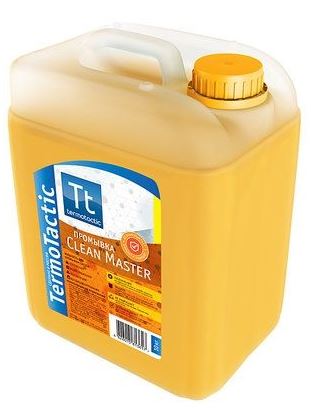
A good concentrate for use in heating, ventilation and air conditioning systems.Thoroughly removes limescale, traces of corrosion and disinfects. The composition is completely safe for metal products and will not damage them during the cleaning process.
Sold at a price of 1 600 rubles per 10 kg.
Advantages:
- High detergent properties;
- Resistant even in hard water;
- Biodegradability rate;
- Disinfection;
- Removes the fat layer.
Disadvantages:
- Not found.
Dixis LUX / 10L
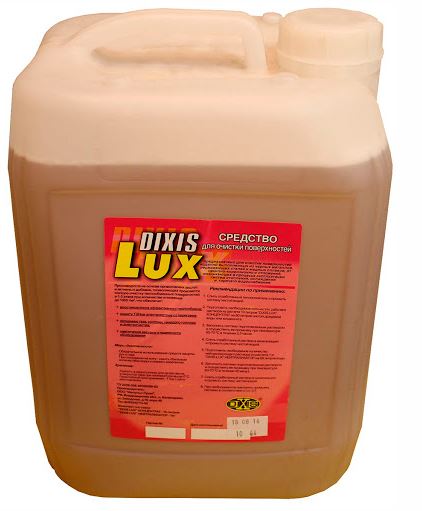
A budget option that is suitable for every heating system. In a short time, it removes the formed scale, sludge and other harmful elements. Due to the high-quality composition, the formation of suspension and sedimentation is excluded, which increases the operational properties.
The average price is 1,440 rubles.
Advantages:
- Efficiency;
- High-quality cleaning;
- Simple to use;
- Restorative effect.
Disadvantages:
- Not found.
SteelTEX IRON
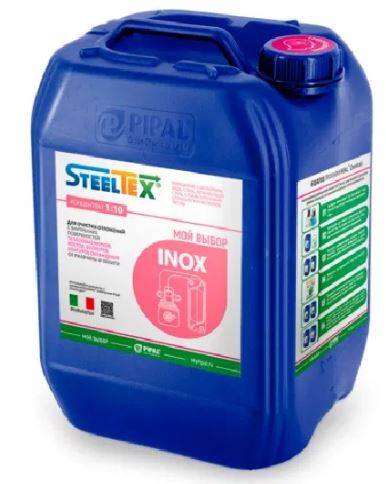
An excellent concentrate suitable for domestic and professional use. After its application, the heating system will start working more efficiently and guarantee the user a high-quality cleaning. Scale and rust dissolve in strong acids, but this does not affect the internal appearance of metal elements.
The average price is 2 270 rubles.
Advantages:
- High-quality cleaning;
- Work speed;
- Does not interact with main parts;
- Suitable for professional use.
Disadvantages:
- Price.
TOP powdery substances
BWT Cilit Neutra P
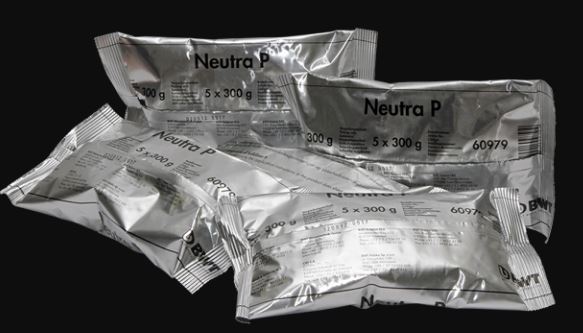
Powder used to neutralize the acidic solution after flushing the heating with a chemical liquid. Before use, it is necessary to dilute the product in water, during this process, you must follow the instructions.
The average price is 3,700 rubles.
Advantages:
- Economical, since a small volume of powder can neutralize a dozen liters of acid;
- Sold in sturdy packaging, which makes it easy to store and transport the product;
- Effective acid neutralization.
Disadvantages:
- Not found.
SteelTEX ZINC
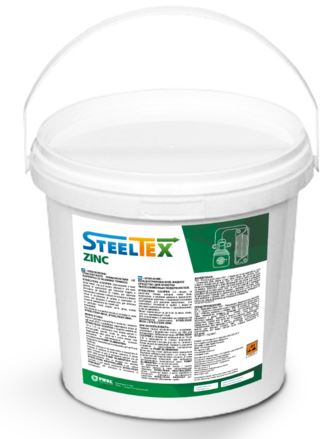
Concentrated powder that can effectively clean heating elements from traces of various contaminants. Used for both home and professional purposes. Compatible with all the main materials used in the manufacture of radiators.
The average price is 5,300 rubles.
Advantages:
- Contains strong acids;
- Strong and convenient packaging;
- Non-corrosive;
- Simple application.
Disadvantages:
- High price.
Rating of solutions that are immediately ready for use
Perchim Medesk
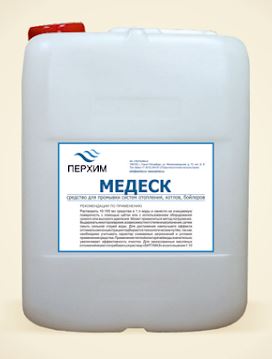
It is sold in a canister (20 l.) And is suitable for organizing effective flushing of the heating system. It is used by many professionals as the main tool, since the composition contains excellent components that can remove scale and dirt in a short period.
The average price is 4 330 rubles.
Advantages:
- Good cleaning;
- Ease of operation, as there is no need to plant anything;
- Does not affect metal elements.
Disadvantages:
- Not found.
Syntilor Watesup 11 kg
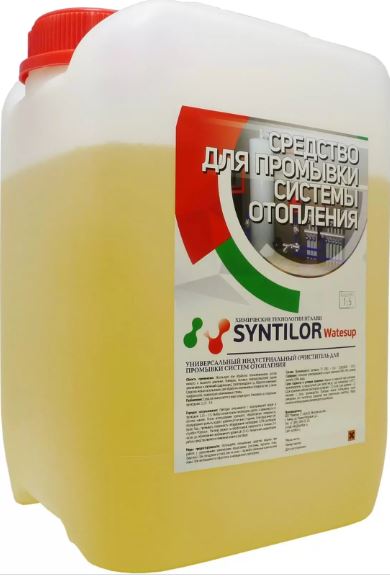
One of the best ready-to-use products for fast cleaning. The product can be used at home where plastic or metal pipes are used. Limestone and corrosion are removed quickly and efficiently. The product cleans the heating efficiently and does not spoil the sealing parts.
The average price is 2,400 rubles.
Advantages:
- Efficiency;
- Action speed;
- Easy application;
- Convenient packaging.
Disadvantages:
- Not found.
Finally
When the heating efficiency drops, but at the same time the pipes are hot on the supply, this is the first sign of contamination. It is important not to postpone cleaning and try to do everything right after the problem is discovered. If you have experience using the models described in the rating, or more interesting options, tell us about it in the comments.












